BIOTRONIK Home Monitoring® - Continuity of Care
BIOTRONIK Home Monitoring® is a pioneering and award-winning remote cardiac monitoring system. Designed to minimize patient effort, it sends cardiac device data automatically every day to the Home Monitoring Service Center (HMSC). Home Monitoring not only allows physicians to review cardiac function, it also sends alerts about relevant changes in patient health and device status.
Home Monitoring covers patients in more than 65 countries worldwide and is available for heart patients with:
- Cardiac monitors
- Pacemakers
- Implantable defibrillators (ICDs)
- Cardiac resynchronization therapy (CRT) devices
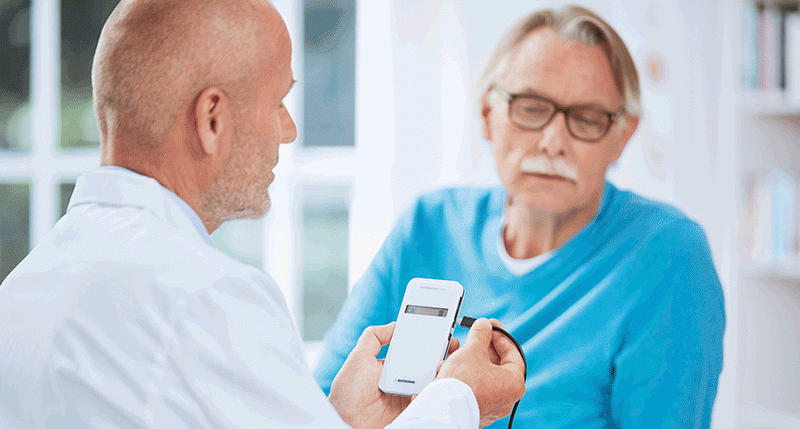
Overview
How Home Monitoring Works
Setup and Use
Why Home Monitoring?
FAQ
Simple, Reliable and Proven
BIOTRONIK Home Monitoring® is highly reliable and simple to use.
With the easy set-up and automatic daily transmission requiring minimal patient involvement, patients can rest assured that they are being monitored by their healthcare professionals and they are notified about relevant clinical and device related issues.
The performance and clinical effectiveness of BIOTRONIK Home Monitoring® has been studied and demonstrated in multiple landmark clinical trials. It is the only remote monitoring system for cardiac devices to be approved by the FDA for early detection and the only system approved as a replacement for device interrogation during in-office follow-up.
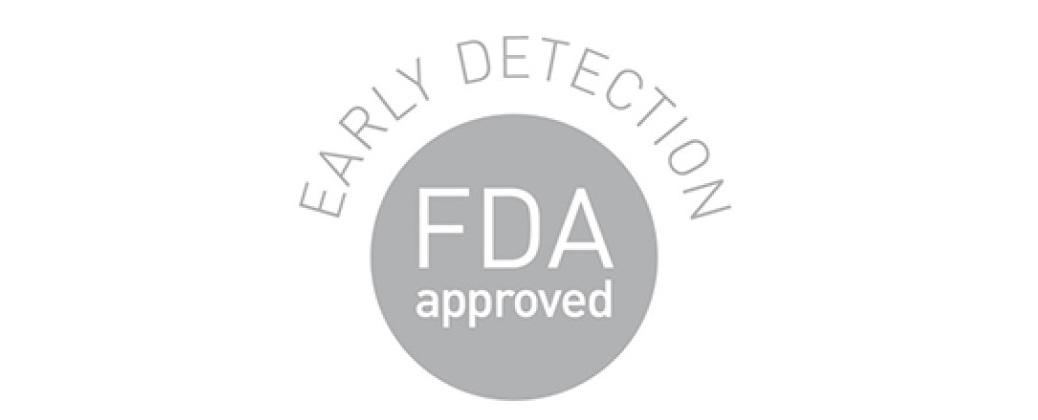
A Legacy of Innovation
BIOTRONIK was the first to offer:
- Daily, automatic wireless remote monitoring across all devices, providing continuous monitoring and enabling prompt and knowledgeable decision making and intervention.
- An easy-to-use patient transmitter with minimal setup and patient interaction necessary to complete data transmissions, for maximum patient compliance.
- A small, mobile transmitter with cellular connectivity at no charge to the patient, making travel safe, simple and hassle-free.
- An intelligent “traffic light” system for efficient alert management by clinics, enabling personalized, need-based patient care.
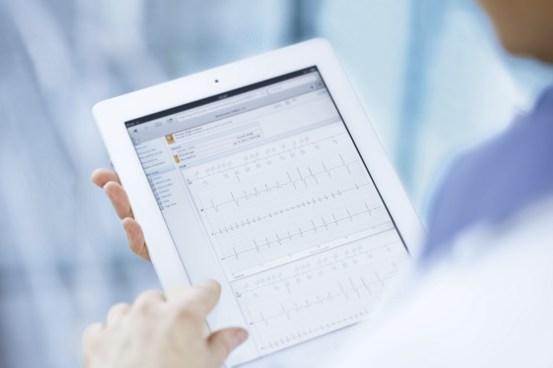
Available for All Devices
BIOTRONIK Home Monitoring® provides enhanced efficiency for clinics and peace of mind for patients.
It is available for all BIOTRONIK devices including:
- Cardiac monitors
- Pacemakers
- Implantable defibrillators
- Cardiac resynchronization therapy devices
Cardiac devices equipped with Home Monitoring have additional memory storage capacity and contain a small antenna for wireless communication with the CardioMessenger – a handheld patient transmitter about the size of a modern smartphone. Home Monitoring has a negligible impact on the battery longevity of your cardiac device.
Cardiac devices equipped with Home Monitoring® have additional memory storage capacity and contain a small antenna for wireless communication with the CardioMessenger – a handheld patient transmitter about the size of a modern smartphone. Home Monitoring has a negligible impact on the battery longevity of your cardiac device.
The System
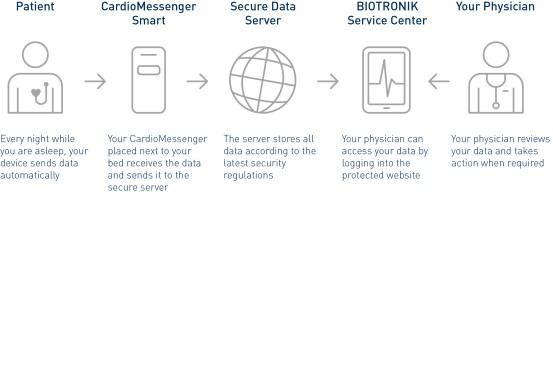
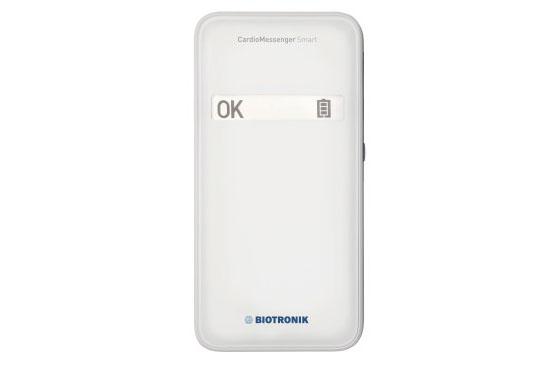
The CardioMessenger
Every day, the CardioMessenger automatically collects and transmits data related to your cardiac health and the status of your cardiac device to the BIOTRONIK Home Monitoring Service Center (HMSC) using mobile cellular technology. This data includes:
- Device function status
- Battery status
- The status of pacing or defibrillation therapies delivered
- Current and historical heart rhythms including any detected abnormalities
- Overall changes in heart function
The HMSC is a secure, web-based platform where your healthcare team can review your information. Data sent to the HMSC is encrypted to protect your privacy. For more information about the systems used to protect your personal health information, click here.
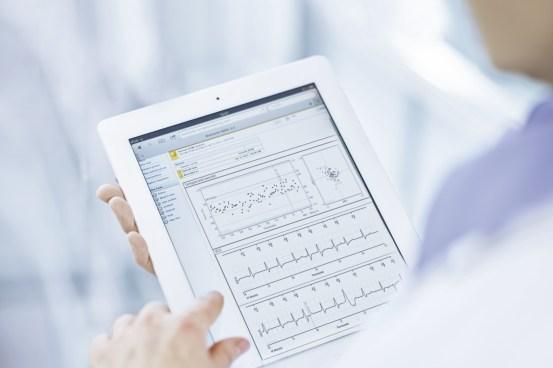
A Web-Based Monitoring Platform
The transmitted medical and device data is collected, automatically analyzed and filtered by the BIOTRONIK HMSC, according to parameters set by your healthcare team. Health and system-related issues are ranked in order of importance according to the alert status. Important alerts can be sent immediately to a patient’s healthcare team via text message or email. All event and trend reports can be accessed and reviewed through the secure HMSC website.
Setting up BIOTRONIK Home Monitoring® is simple and, once set up, the system is fully automatic. As a patient, you don’t need to take any further action, other than making sure your CardioMessenger is charged, for successful daily transmissions to your care team. Together with your physician, you can decide what time of the day data transmission will take place. Typically, these transmissions are scheduled to take place while you sleep.

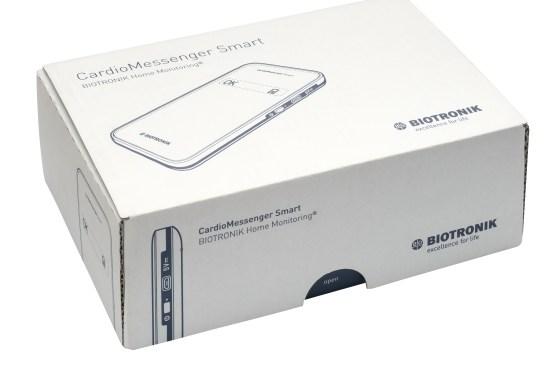
You will receive a CardioMessenger device either at the time of your procedure or shortly after.
On returning home after your procedure, please set up the CardioMessenger as soon as possible, preferably the same day. Setup is easy, with just three simple steps.
Step 1: Remove contents from CardioMessenger box
Step 2: Position the CardioMessenger near your bed (for example, when transmissions are done during the night)
Step 3: Plug the CardioMessenger into a nearby power outlet
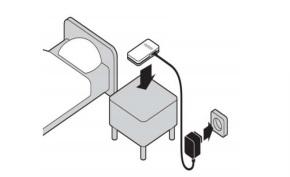
After it is plugged in, the CardioMessenger will turn on automatically and perform a self- test. The CardioMessenger is ready to use once the self-test is completed and the following icons are displayed:

If this is not the case, please refer to the CardioMessenger Smart Patient Manual. Both the CardioMessenger Smart Quick Start Guide and the CardioMessenger Smart Patient Manual contain important information concerning the setup and use of your CardioMessenger. Please review each thoroughly.
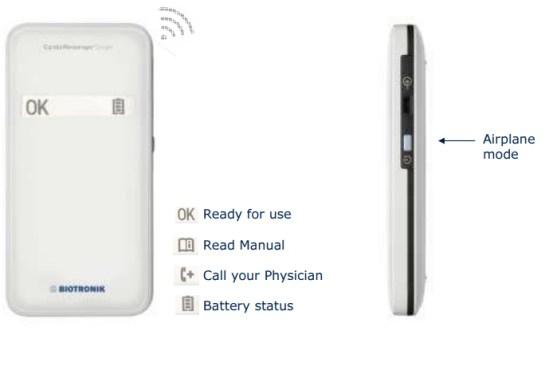
Your Data and Your Healthcare Professionals
Your healthcare team will review your data at intervals set by the clinic after discussing these options with you. Your physician will generally review reports only during normal working hours. If you have any questions about how your data is being monitored, please ask your physician or care provider. BIOTRONIK Home Monitoring® should only be used as directed by a physician. BIOTRONIK Home Monitoring® may be unavailable due to cellular coverage being unavailable in your area. BIOTRONIK Home Monitoring® may also be periodically unavailable due to cellular service outages in your area or scheduled maintenance. BIOTRONIK Home Monitoring® is not a replacement for emergency care. Please call your regional emergency service.
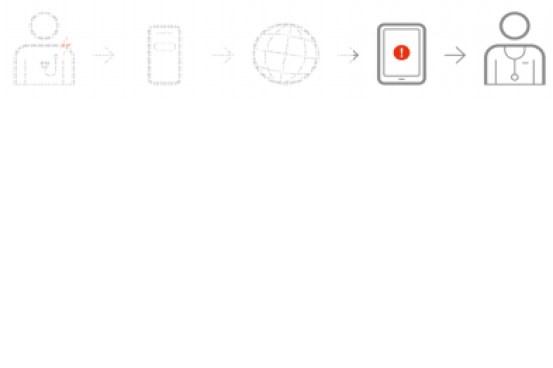
Remote patient management with Home Monitoring offers you the opportunity to benefit from intelligent, event-driven care that improves clinical outcomes without the inconveniences of calendar-based in-clinic follow ups. BIOTRONIK Home Monitoring® can be used to decrease the frequency of in-office follow-ups, which saves you traveling time and expenses.
Studies
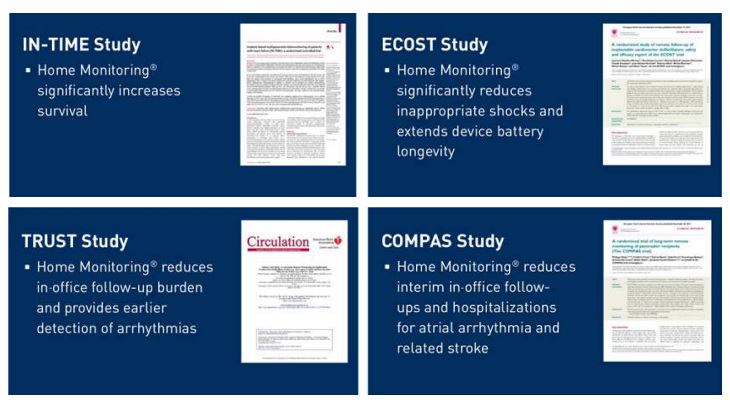
Improved Patient Outcomes
More than 3,500 patients have been involved in clinical studies of BIOTRONIK Home Monitoring®. These studies demonstrate that Home Monitoring significantly improves clinical outcomes and survival compared with traditional periodic, in-person device follow-up. The IN-TIME study, one of the largest and most recent studies to examine heart failure and remote monitoring, demonstrated a 50% decrease in mortality for patients using BIOTRONIK Home Monitoring®.
Home Monitoring also has been shown to reduce:
- Hospitalization caused by atrial arrhythmias or strokes by 66% (COMPAS)
- In-office visits by 45% (TRUST)
- Inappropriate shock delivery for ICD/CRT patients by 52% (ECOST)
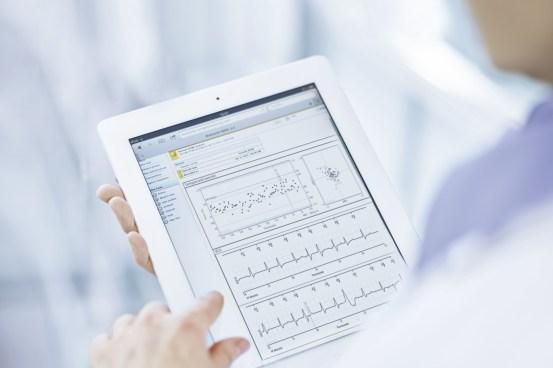
Early Detection
BIOTRONIK Home Monitoring® provides early detection of arrhythmias, including silent, asymptomatic arrhythmias, allowing for earlier intervention (TRUST, COMPAS). Being monitored daily allows earlier detection for:
- Changes in your heart status that you may not notice yourself
- Early signs of worsening heart status which could escalate without treatment
The Benefits of Home Monitoring
Historically, patient care guidelines recommended in-person appointments for device patients every three to six months, a time consuming and resource intensive effort for patients and healthcare providers. Moreover, changes in heart status may occur between these appointments. Home Monitoring provides valuable clinical data which could help guide care and possibly prevent hospitalization or even death. BIOTRONIK Home Monitoring® allows follow-up appointments to be catered to you, so that your data is reviewed as necessary, rather than only on a pre-set schedule. You can rest easier knowing that you are being monitored and your healthcare team can be confident that they will be notified of clinically relevant device events in between your in-person visits.
How does the system work?
Your implanted device sends data to the CardioMessenger every night. The latter transmits the data to your care team using mobile networks.
How do I set up the CardioMessenger?
Setting up BIOTRONIK Home Monitoring® is simple and, once set up, the system is fully automatic. As a patient, you are not required to take any action for successful daily transmissions. For more information, please refer to the Quick Start Guide.
Will the transmitter interfere with my cell phone?
No, the transmitter will not interfere with your cell phone.
What happens if my CardioMessenger loses cell phone connection?
You will probably not notice if your CardioMessenger loses its cell phone connection. If it does, it’s not a problem. As soon as the cell phone network is available again, your CardioMessenger will reestablish the connection.
What is the CardioMessenger for?
The CardioMessenger allows your cardiologist to monitor the status of your device and your heartrate remotely. This is additional to follow-up.
Do I have to carry the CardioMessenger with me all the time?
No. The CardioMessenger should be placed on the bedside table near your bed. You do not need to carry it with you all the time. Transmissions are scheduled every night around 2:00 a.m.
When I am away for several days without the CardioMessenger, do the messages stay stored in memory?
Important information remains stored in memory for transmission to occur as soon as possible.
I'm going on vacation, should I take the CardioMessenger with me?
If you’re leaving for more than 7 days, it is advisable to take the CardioMessenger with you. For a trip of less than 7 days, you can leave it plugged in at home. Please see our Travel Guide for more information.
The OK light no longer works, what should I do?
CardioMessenger Smart. Check the connections. Press the blue button (right side of the device) for 2 seconds. The OK symbol appears and flashes for 3 min, then stabilizes. Your device is now ready to transmit.
CardioMessenger II-S. Disconnect the power plug and reconnect it. The OK indicator lights orange for 3 minutes and then turns green. Your device is now ready to transmit.
CardioMessenger S. Disconnect the power plug and reconnect it. The OK indicator lights orange for 3 minutes and then turns green. Your device is now ready to transmit.
CardioMessenger II. Disconnect the power plug and reconnect it. The OK indicator lights orange for 5 minutes and then turns green. Your device is now ready to transmit.
CardioMessenger I. Press the black round button on the side for at least 3 seconds. An orange light and a green light will appear and flash together. After 5 minutes, the orange light disappears (the network has been found). Only the green light flashes. Your device is now ready to transmit.
How do you (BIOTRONIK) know if I sleep next to the CardioMessenger or not?
If you are absent for more than 21 days without your CardioMessenger, a message is generated by the system specifying a transmission fault of at least 21 days. At this time, a healthcare professional will contact you in order to understand why the transmissions are interrupted.
Can my CardioMessenger be used by someone who also has an implanted heart device?
The CardioMessenger is only compatible with BIOTRONIK devices. Each cardiac implant works with one type of CardioMessenger. In addition, to allow data transmission, prior registration is required. For all these reasons, a CardioMessenger can only be used for one patient at a time.
Who controls my data?
The data transmitted by your CardioMessenger is accessible on a secure website by the medical team that follows you remotely. The healthcare professionals who remotely monitor your pacemaker or defibrillator are the only ones who analyze the data transmitted. If a cardiac event happens, your healthcare professional will contact you.
Is the data transmission secure?
Yes, the transmission is secure. Data is transmitted as an encrypted medical message and is only accessible via a secure, password-protected website.
Who can access my data?
Only your healthcare team, or persons authorized by your physician, are able to access your data, and will be alerted if something unusual is detected.
If I am given this CardioMessenger, am I sicker than someone else?
The CardioMessenger is an additional monitoring tool that has been prescribed for you by your cardiologist to monitor the status of your device more regularly. This does not mean that you are sicker than someone else.
Do I have to tell you about my treatment changes?
No, this only concerns your healthcare professional.
I am going to undergo laser treatment, is it compatible with my device?
Some surgeries may be incompatible with your defibrillator / pacemaker. This is why you must notify your cardiologist before an operation.
Can I cross the airport security checks?
To avoid going under the metal detectors, present your pacemaker / defibrillator carrier card.
Can I do sports?
Certain sports can present risks, it is therefore best to seek advice from your cardiologist.
Can I continue to conduct intimate relations now that I have a pacemaker / defibrillator?
Yes, there should be no issues related to the presence of your pacemaker / defibrillator.
Can I put my mobile phone in a shirt pocket close to my cardiac implant?
No, as this could disturb the functioning of your device. Similarly, it is advisable to hold your mobile to the ear opposite your implanted side when speaking.
Can I play game consoles?
There are no known issues; you can discuss this with your cardiologist.
Can I drive?
There is no contraindication; you can discuss this with your cardiologist.
Is there a charge for Home Monitoring?
This service is completely free.
Does the CardioMessenger consume electricity?
The CardioMessenger consumes a small amount of electricity.
Do I need to recharge my CardioMessenger?
If you use CardioMessenger Smart, you’ll need to charge it just like you would charge a cell phone. A fully charged mobile CardioMessenger Smart lasts for up to 48 hours before you need to recharge it. To recharge it, just plug it into the power adapter.
The light from the CardioMessenger annoys me, what can I do?
You can place the CardioMessenger under the bed.
Can I have a certificate to travel with the CardioMessenger?
For any certificate related to your cardiac device or CardioMessenger, please contact the medical team attending you.
What should I do if I’m experiencing certain symptoms such as a dizzy spell, heart racing, strange sensations or similar symptoms?
If you feel that you are having a medical emergency, please seek immediate medical attention by calling the emergency service number in your area. If you experience symptoms that you feel are not serious, simply note the date and time when you experienced them and call your healthcare professional’s office. He or she may be able to access information from BIOTRONIK Home Monitoring® to help assess what is happening with your heart and your implantable device.
